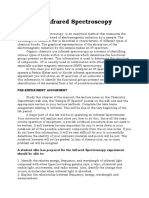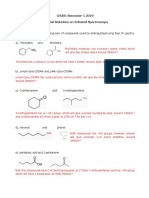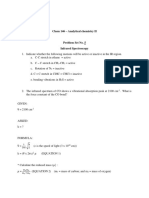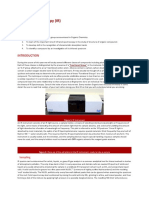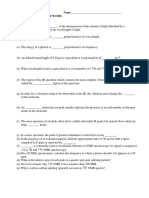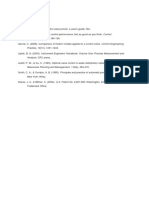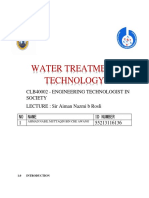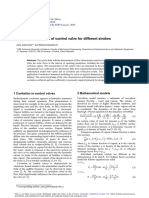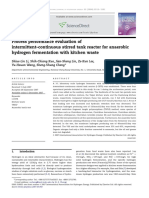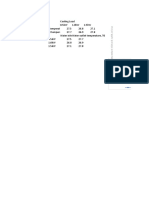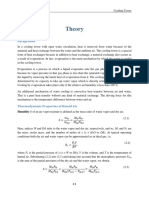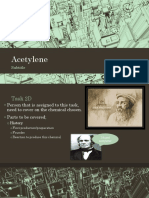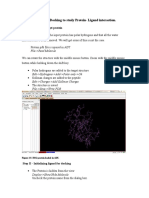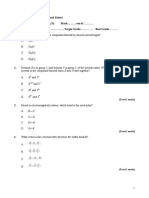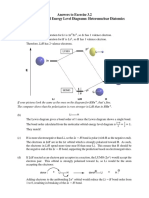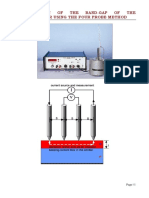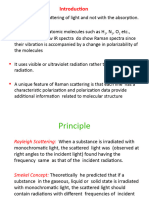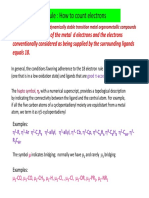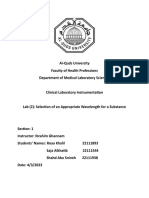0% found this document useful (0 votes)
115 views2 pagesTutorial 7
This document provides a tutorial on infrared (IR) spectroscopy. It discusses key topics such as the components of IR instruments, sample preparation techniques, and the differences between dispersive and Fourier transform IR spectroscopy. Specifically, it addresses the basic principles of IR spectroscopy, common sample preparation methods for solids and liquids, the purpose of monochromators and their components, and how correlation charts can be used to predict and identify major IR absorptions in unknown compounds.
Uploaded by
nabilCopyright
© © All Rights Reserved
We take content rights seriously. If you suspect this is your content, claim it here.
Available Formats
Download as DOCX, PDF, TXT or read online on Scribd
0% found this document useful (0 votes)
115 views2 pagesTutorial 7
This document provides a tutorial on infrared (IR) spectroscopy. It discusses key topics such as the components of IR instruments, sample preparation techniques, and the differences between dispersive and Fourier transform IR spectroscopy. Specifically, it addresses the basic principles of IR spectroscopy, common sample preparation methods for solids and liquids, the purpose of monochromators and their components, and how correlation charts can be used to predict and identify major IR absorptions in unknown compounds.
Uploaded by
nabilCopyright
© © All Rights Reserved
We take content rights seriously. If you suspect this is your content, claim it here.
Available Formats
Download as DOCX, PDF, TXT or read online on Scribd
/ 2












